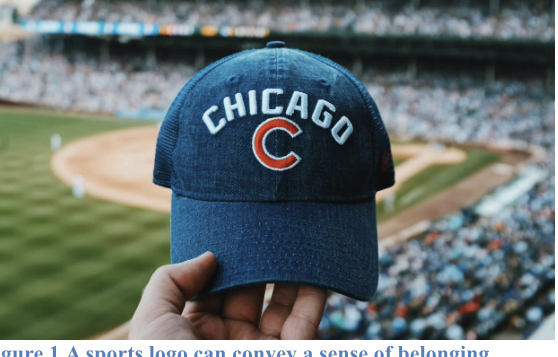A sports logo can convey a sense of belongin
Many people will watch sports every weekend (if not every day of the week) but never really give a second thought about the design of the sports logo and uniform of their favorite team. They were around well before making money from merchandising was a thing and the design has always been important.
These days we see sports logos everywhere. Sports shops are full of different logos, as is social media, TV, and even many of the betting sites available across the nation. Even sports fans might take them for granted – until a poorly executed modernization or change occurs.
At that point, it is abundantly clear that sports logo design is incredibly important. But how can we ensure that sports logos are designed right? What are the secrets behind successful sports logos and rebranding? And what do these logos mean to the most important people in the equation – the fans?
First Impressions
For some sports organizations, the first impression was a very long time ago now. But many of these older teams and clubs have rebranded or updated the logo over the years – and the response is always to be considered seriously. This is the badge, the logo, and the banner, that the organization follows.
Many US sports teams, in particular, may feel a little hamstrung in the scope of what their logo can be. However, a logo is designed to convey personality while separating the team from the competition. This first impression is vitally important to creating – and retaining – identity.
History and Tradition
Although the best sports logos can become iconic in their own right, as with the New York Yankees, even a rebranding exercise can use ideas of history and tradition. Some logos have been updated numerous times and using elements of old favorites is always a good way to get the fans onside.
There is sometimes a rush to modernize sports logos. Designers need to recognize that this doesn’t mean that they cannot use local history and a shared story of a city’s past. This sense of belonging and of being from a particular place can be a powerful way of coming up with a successful design.
Know the Audience
A designer will probably not be from the same city as the sports team or even a fan. So it is vitally important that a lot of research is carried out into how the fans and locals view their team. Understanding a target audience – and that the real target audience is the fans – is key.
By researching a team and its city, a designer can find out what kind of elements should be included in a logo or rebrand. This personal touch is an excellent way to convey a place’s personality. Rebranding or updating may be more difficult and restricting but there is still room to gain support this way.
Think Timeless
All designers will know about issues arising from ill-defined briefs or clients who don’t seem to know what they really want. Part of a designer’s role is to provide an answer to that. But it can be difficult when the client feels as though they need something “futuristic” or “modern” and don’t seem to realize that doesn’t mean tradition and history have to be discarded.
Rather than “modern”, sports team logos should be “timeless”. This allows for the historical elements we talked about earlier but in a way that won’t make the logo look dated in five years’ time. A good sports logo is able to work at the present time and for that to continue to be the case.
Simplicity is Key
One of the ways that a designer can make a sports team logo timeless is to keep it as simple as possible. Minimal design can be very effective, as it helps convey the ideals that you need in an easy-to-understand way. It can also help with other issues, such as adaptability and versatility (of more in a moment).
One thing that is very noticeable from sports logos of the past is that they are oftentimes very busy. With so much going on, the message and identity can sometimes be lost. Today’s logos tend to be far simpler – across all sports – and also more recognizable.

How versatile a logo is is also very important
Versatility
A logo’s adaptability and versatility have always been crucial to its success. But this aspect is perhaps even more important these days when merchandising and jersey sales have become a major income source. There was a time when the logo was only seen on the field. Now it will be used on all kinds of products.
The color and subject of the logo may be pre-determined. But using all the factors and elements that we have outlined here, designers can ensure that a logo can be used everywhere.Merchandising and apparel sales will mean that it needs to be able to be used in different color ways now as well.
Team Pride
Players and coaches may be revered, possibly long after they have stopped playing and coaching, but a logo is something that will forever remain intrinsically linked to a sports team. That is why it is so important that the design is perfect. Updates and modifications can be implemented but the best logos are iconic because of their longevity.
When it comes down to it, we will always return to a feeling of belonging and pride when we talk about sports logos. They are a sign of who we are and where we are from. They are important far beyond the confines of the stadium and designers have a duty to get it right.































